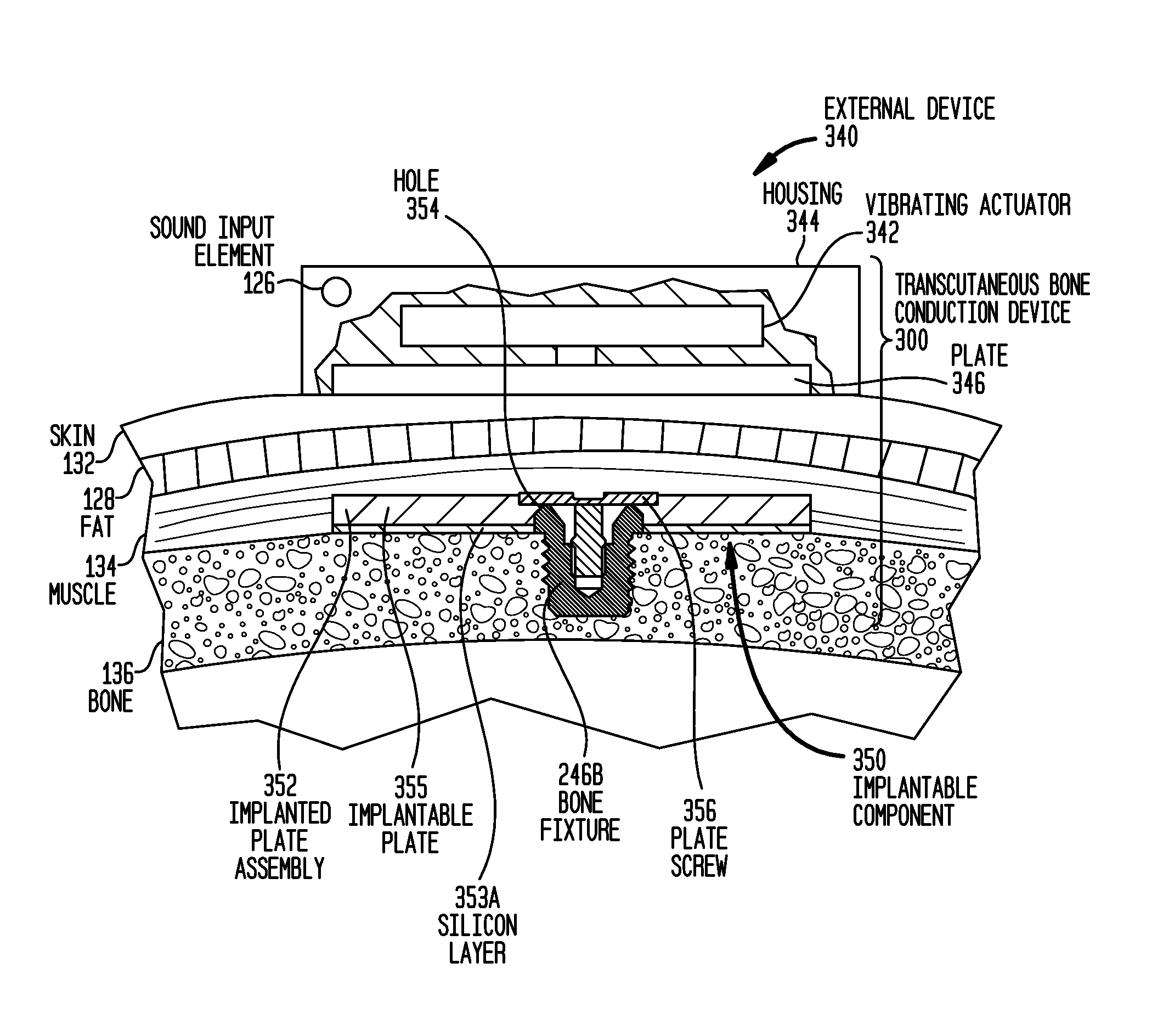Vibration isolation in a bone conduction device
a bone conduction device and vibration isolation technology, applied in the field of bone conduction devices, can solve the problems of conductive hearing loss and impede the normal mechanical pathway that provides sound to hair cells in the cochlea, and achieve the effect of enhancing the hearing of the recipien
- Summary
- Abstract
- Description
- Claims
- Application Information
AI Technical Summary
Benefits of technology
Problems solved by technology
Method used
Image
Examples
Embodiment Construction
[0026]Aspects of the present invention are generally directed to a bone conduction device configured to deliver mechanical vibrations to a recipient's cochlea via the skull to cause a hearing percept. The implantable component of the bone conduction device includes a bone fixture adapted to be secured to the skull and a vibratory element attachable to the bone fixture. The vibratory element vibrates in response to sound received by the device. The implantable component also includes a vibration isolator configured to be disposed between the vibratory element and the skull. The vibration isolator is configured to substantially prevent vibration generated by the vibratory element from being transferred directly from the vibrator to the skull. As such, vibrations transferred to the skull are primarily transferred from the vibratory element through the bone fixture.
[0027]In certain embodiments of the present invention, the bone conduction device is a passive transcutaneous bone conducti...
PUM
 Login to View More
Login to View More Abstract
Description
Claims
Application Information
 Login to View More
Login to View More - R&D
- Intellectual Property
- Life Sciences
- Materials
- Tech Scout
- Unparalleled Data Quality
- Higher Quality Content
- 60% Fewer Hallucinations
Browse by: Latest US Patents, China's latest patents, Technical Efficacy Thesaurus, Application Domain, Technology Topic, Popular Technical Reports.
© 2025 PatSnap. All rights reserved.Legal|Privacy policy|Modern Slavery Act Transparency Statement|Sitemap|About US| Contact US: help@patsnap.com



